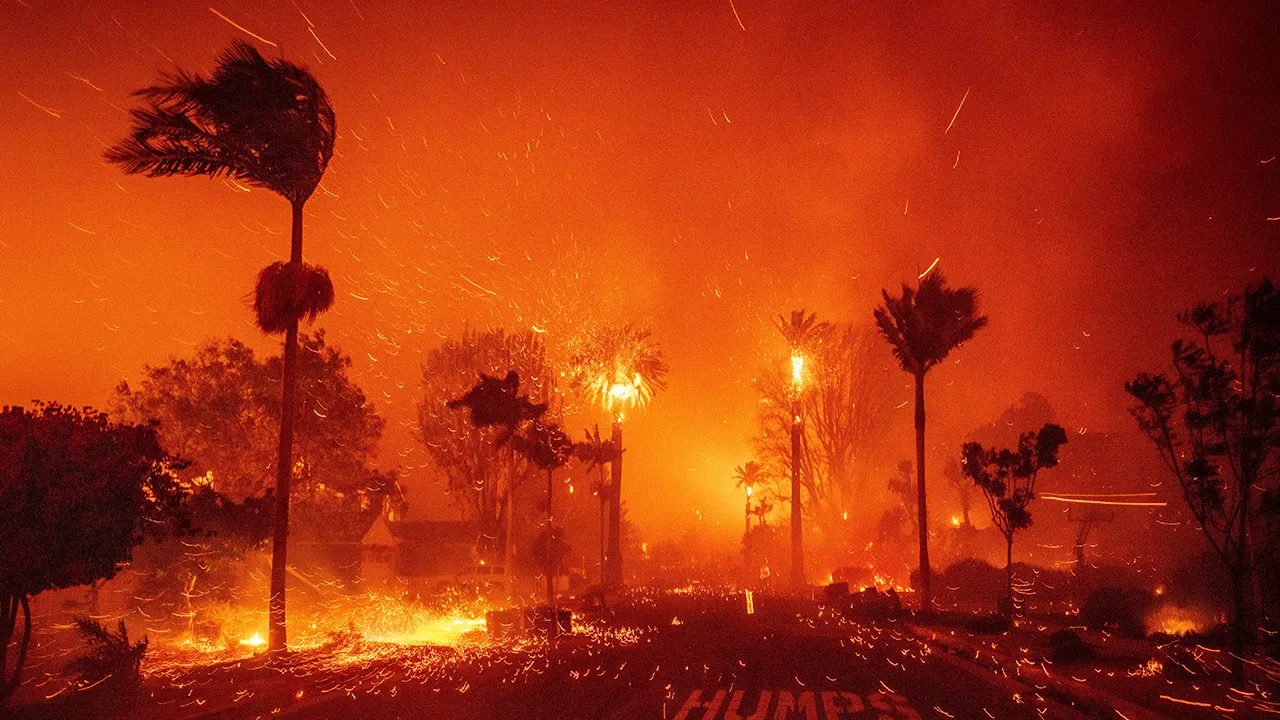Unseen Challenges: The Reality of Wildfires
As wildfires continue to threaten Los Angeles, the realities faced by first responders are often hidden from public view. A seasoned fire captain, who has battled numerous blazes in the region, reveals the unseen challenges that characterize wildfire management in an urban landscape. Through this exclusive insight, we delve deeper into the complexities of fire management, the psychological toll on firefighters, and the broader implications for communities living on the brink of disaster.
Understanding the Landscape of Wildfires
Los Angeles is not just known for its glitz and glamour; it’s also a region prone to natural disasters, particularly wildfires. The combination of dry, hot conditions and strong winds creates a perfect storm for fire outbreaks. As we look at the landscape, it becomes clear that the challenges are multifaceted:
- Topography: The hilly terrain of Los Angeles makes it easier for fires to spread rapidly, complicating evacuation efforts.
- Urban Interface: Many homes are situated near brush and forested areas, increasing the risk of ignition.
- Climate Change: Increasing temperatures and prolonged droughts have made fire seasons longer and more intense.
The Role of the Fire Captain
The fire captain’s role extends beyond just firefighting. With years of experience under their belt, they are responsible for strategic planning, resource allocation, and team management. Here are some of the critical responsibilities they face:
- Leadership: In high-stress situations, the captain must lead by example, making split-second decisions that could save lives.
- Communication: Keeping lines of communication open between various agencies—including police, emergency services, and local government—is vital for effective disaster response.
- Training: Ensuring that the team is well-trained and prepared for the unique challenges of each wildfire season is paramount.
Harrowing Realities: The Psychological Toll
Perhaps one of the most challenging aspects of fighting wildfires is the psychological toll it takes on first responders. The fire captain shares that each call to action is fraught with high stakes, and the aftermath can be overwhelming. This includes:
- Trauma Exposure: Firefighters often witness devastating scenes, from destroyed homes to injured residents, which can lead to long-term psychological effects.
- Burnout: The physical and emotional demands of firefighting can lead to exhaustion, both mentally and physically, especially during prolonged wildfire events.
- Community Connection: Firefighters frequently build relationships with the communities they serve, making it personally distressing when those communities are affected by fire.
Strategic Fire Management in an Urban Landscape
Managing wildfires in an urban setting requires a unique approach that blends traditional firefighting techniques with innovative strategies. The fire captain emphasizes the importance of preparedness and community involvement:
- Community Education: Informing residents about fire safety measures can significantly reduce the risk of fire spread. Programs that teach homeowners how to create defensible space around their properties are crucial.
- Firebreaks: Creating firebreaks—gaps in vegetation that can slow down or stop the fire—is an essential tactic in wildfire management.
- Technology Utilization: Modern tools such as drones and satellite imagery are increasingly being used to monitor fire behavior and support firefighting efforts.
Collaboration Across Agencies
The complexity of managing wildfires requires collaboration across multiple agencies. The fire captain highlights how local, state, and federal entities must work together in times of crisis:
- Resource Sharing: When a wildfire exceeds local capacities, neighboring jurisdictions often send additional resources, including personnel and equipment.
- Joint Training Exercises: Conducting joint drills with various agencies ensures everyone is on the same page during an actual event.
- Funding and Support: Ongoing discussions about funding for firefighting resources and community resilience are essential to prepare for future fire seasons.
Looking Ahead: Future of Wildfire Management
As climate change continues to impact weather patterns, the fire captain believes it is crucial to adapt our strategies for wildfire management. This includes:
- Investing in Research: Understanding the science behind wildfires and their behavior can lead to more effective firefighting techniques.
- Sustainable Practices: Implementing land management practices that reduce fuel loads, such as controlled burns, can mitigate the intensity of wildfires.
- Community Resilience Plans: Engaging communities in developing resilience plans can empower residents to take proactive steps in safeguarding their homes.
Conclusion: A Call for Awareness and Action
Wildfires are an ever-present threat in Los Angeles, but the unseen challenges faced by first responders, particularly fire captains, are often overlooked. By understanding these complexities, we can foster greater awareness and support for our first responders, enabling them to protect our communities effectively. As we move forward, it is essential for residents and officials alike to recognize the importance of preparedness, collaboration, and resilience in the face of an increasingly fire-prone future.
In the end, the fight against wildfires is not just about battling flames; it’s about protecting lives, homes, and the very fabric of our communities. Together, we can face the unseen challenges and emerge stronger and more united than ever before.
See more Your Daily Weather



